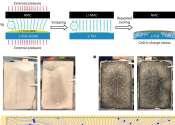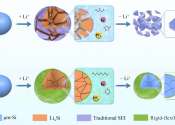Scientists intensify electrolysis, utilize carbon dioxide more efficiently with magnets
For decades, researchers have been working toward mitigating excess atmospheric carbon dioxide (CO2) emissions. One promising approach captures atmospheric CO2 and then, through CO2 electrolysis, converts it into value-added ...
Jun 30, 2021
1
530









